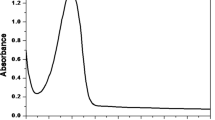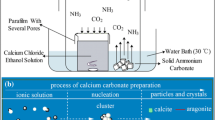Abstract
The non-toxic amphiphilic bottlebrush polymers capable of self-organization on various interfaces and including cerium ions in structural assemblies without changing their biological properties have great importance for medicine and pharmacy. In the work, we studied the self-assembly in mixed monolayers of two copolymers – methoxy[oligo(propylene glycol)] methacrylate and methoxy[oligo(ethylene glycol)] methacrylate (PK) and its analogue with N-[3-(dimethylamino)propyl]methacrylamide) units quaternized with methyl iodide (PKq), and cholesterol on the aqueous subphase-air interface in the present of cerium compounds. The effect of the polymer-cerium composition on the oxidoruductase activity was investigated as well. The cationic polymer PKq was shown to exhibit higher specific activity of antioxidant enzymes than the non-ionic PK copolymer, increasing the activity of SOD by 20%, catalase – by 15%, GR – by 24%, G6PD – by 88%, and AlDH – by 10%. In the presence of cerium compounds (Ce(NO3)3, NH4[Ce(NO3)3], CeO2 nanoparticles) these effects increased significantly. Cholesterol in a monolayer of polymers contributed to an increase of compressibility modulus Cs−1 under the influence of cerium ions in mixed monolayers by approximately two times compared to mixed Chol+polymers monolayers on water, and Cs−1 became 640 mN/m for Chol+PK monolayers and 700 mN/m for Chol+PKq monolayers. AFM and wettability study suggest elastic structure of transferred mixed monolayers that is suitable for designing a drug delivery system.





Similar content being viewed by others
Availability of data and materials
The datasets generated during the study are available from the corresponding author upon reasonable request.
References
Barker E, Shepherd J, Asencio IO (2022) The use of cerium compounds as antimicrobials for biomedical applications. Molecules 27:2678. https://doi.org/10.3390/molecules27092678
Ivanov VK, Shcherbakov AB, Usatenko AV (2009) Structure-sensitive properties and biomedical applications of nanodispersed cerium dioxide. Russ Chem Rev 78(9):924–941
Shcherbakov AB, Zholobak NM, Ivanov VK (2019). In: Scire S, Palmisano L (eds) Cerium oxide (CeO2): synthesis, properties and applications. Elsevier Science, Amsterdam, Netherlands. https://doi.org/10.1016/B978-0-12-815661-2.00001-3
Jowsey J, Rowland RE, Marshall JH (1958) The deposition of the rare earths in bone. Radiat Res 8:490–501
Gabbiani G, Jacqmin ML, Richard RM (1966) Soft-tissue calcification induced by rare earth metals and its prevention by sodium pyrophosphate. Br J Pharm Chemother 27:1–9
Furie BC, Mann KG, Furie B (1976) Substitution of lanthanide ions for calcium ions in the activation of bovine prothrombin by activated factor X. High affinity metal-binding sites of prothrombin and the derivatives of prothrombin activation. J Biol Chem 251:3235–3241
Achyuthan KE, Mary A, Greenberg CS (1989) Tb(III)-ion-binding-induced conformational changes in platelet factor XIII. Biochem J 257:331–338
Enyeart JJ, Xu L, Gomora JC, Enyeart JA (1998) Modulation of IA potassium current in adrenal cortical cells by a series of ten lanthanide elements. J Membr Biol 164:139–153
Bentrop D, Bertini I, Cremonini MA, Forsén S, Luchinat C, Malmendal A (1997) Solution structure of the paramagnetic complex of the N-terminal domain of calmodulin with two Ce3+ ions by 1H NMR. Biochemistry Biochem 36:11605–11618
Lewin C (1924) Uber die verwendung einer cerium-jodverbindung (Introcid) in der therapie der geschwulstbildung. Med Klin 20:1319–1323
Zhang GY, Zhao HJ, Xin ZJ, Qu JL, Wang BG, Wang H (2009) Effect of cytotoxicity on normal cells and anti-tumor activity on tumor cells of cerium nitrate in vitro. J Xi’an Jiaotong Univ 30(6):709–711
Oberdisse E, Rohling G, Losert W, Schurig R, Oberdisse U (1973) Influence of rare earths on insulin secretion in rats. Naunyn Schmiedebergs Arch Pharmacol 280(2):217–221. https://doi.org/10.1007/bf00499183
Garner JP, Heppell PS (2005) The use of flammacerium in british burns units. Burns 31(3):379–382. https://doi.org/10.1016/j.burns.2004.12.001
Elkhatib W, Noreddin A (2014) In vitro antibiofilm efficacies of different antibiotic combinations with zinc sulfate against pseudomonas aeruginosa recovered from hospitalized patients with urinary tract infection. Antibiotics (Basel) 3(1):64–84
Ghasemi F, Jalal R (2016) Antimicrobial action of zinc oxide nanoparticles in combination with ciprofloxacin and ceftazidime against multidrug-resistant Acinetobacter baumannii. JGAR 6:118–122
Ahmed B, Solanki B, Zaidi A, Khan MS, Musarrat (2019) Bacterial toxicity of biomimetic green zinc oxide nanoantibiotic: insights into ZnONP uptake and nanocolloid-bacteria interface. J Toxicol Res 8(2):246–261. https://doi.org/10.1039/c8tx00267c
Salahuddin K, Aziz R, Azamal H (2018) Properties of zinc oxide nanoparticles and their activity against microbes. Letters 13(1):141. https://doi.org/10.1186/s11671-018-2532-3
Kamorin DM, Simagin AS, Orekhov DV, Kazantsev OA, Bolshakova EA, Sivokhin AP, Savinova MV, Orekhov SV (2022) Synthesis and thermoresponsive properties of polymethacrylate molecular brushes with oligo(ethylene glycol)-block-oligo(propylene glycol) side chains. Polym Bull 79:8599–8616. https://doi.org/10.1007/s00289-021-03929-x
Simonova M, Kamorin D, Filippov A, Kazantsev O (2023) Synthesis, characterization, conformation in solution, and thermoresponsiveness of polymer brushes of methoxy[oligo (propylene glycol)-block-oligo(ethylene glycol)]methacrylate and N-[3-(dimethylamino)propyl]methacrylamide obtained via RAFT polymerization. Polymers 15:1641. https://doi.org/10.3390/polym15071641
Sivokhin A, Orekhov D, Kazantsev O, Sivokhina O, Orekhov S, Kamorin D, Otopkova K, Smirnov M, Karpov R (2022) Random and diblock thermoresponsive oligo(ethylene glycol)-based copolymers synthesized via photo-induced RAFT polymerization. Polymers 14:137. https://doi.org/10.3390/polym14010137
Ordanini S, Cellesi F (2018) Complex polymeric architectures self-assembling in unimolecular micelles: preparation. Characterization and Drug Nanoencapsulation Pharmaceutics 10:209. https://doi.org/10.3390/pharmaceutics10040209
Verde-Sesto E, Arbe A, Moreno AJ, Cangialosi D, Alegría A, Colmenero J, Pomposo JA (2020) Single-chain nanoparticles: opportunities provided by internal and external confinement. Mater Horiz 7:2292–2313. https://doi.org/10.1039/D0MH00846J
Wang D, Wang J, Huang H, Zhao Z, Gunatillake PA, Hao X (2019) Brush-shaped RAFT polymer micelles as nanocarriers for a ruthenium (II) complex photodynamic anticancer drug. Eur Polym J 113:267–275. https://doi.org/10.1016/j.eurpolymj.2019.01.074
Zhang XY, Zhang PY (2017) Polymersomes in nanomedicine - a review. Curr Med Chem 13(2):124–129. https://doi.org/10.2174/1573413712666161018144519
Yorulmaz AS, Kyropoulou M, Di Leone S, Schoenenberger C-A, Meier WP, Palivan CG (2019) Biomolecules turn self-assembling amphiphilic block co-polymer platforms into biomimetic Interfaces. Front Chem 6:645. https://doi.org/10.3389/fchem.2018.00645
Rappoport S, Chrysostomou V, Kafetzi M, Pispas S, Talmon Y (2023) Self-aggregation in aqueous media of amphiphilic diblock and random block copolymers composed of monomers with long side chains. Langmuir 39:3380–3390. https://doi.org/10.1021/acs.langmuir.2c03294
Zamyshlyayeva O, Kamorin D, Kazantsev O, Simagin A, Balakireva A, Baten′kin M, Melnikova N (2023) Monolayers of bottlebrush amphiphilic polymers and their mixed monolayers with dihexadecyl phosphate at the air-water interface. Colloid Polym Sci, The effect of cerium (III) ions and quaternization of polymers. https://doi.org/10.1007/s00396-023-05176-0
Adamson AW (1976) Physical chemistry of surfaces, 3rd edn. Wiley, New York
Davies JT, Rideal EK (1961) Interfacial phenomena. Academic Press, New York
Summ BD, Goryunov YuV (1976) Physicochemical basis of wetting and spreading. Chemistry, Moscow (in Russ.)
Melnikova N, Balakireva A, Orekhov D, Kamorin D, Didenko N, Malygina D, Knyazev A, Novopoltsev D, Solovyeva A (2021) Zinc oxide nanoparticles protected with terpenoids as a substance in redox imbalance normalization in burns. Pharmaceuticals 14:492. https://doi.org/10.3390/ph14060492
Dutta D, Mukherjee R, Ghosh S, Patra M, Mukherjee M, Basu T (2022) Cerium oxide nanoparticles as antioxidant or pro-oxidant. Appl Nano Mater 5:1690–1701. https://doi.org/10.1021/acsanm.1c04518
Conde MM, Conde O, Minones JM (2019) Interactions between polymers and lipid monolayers at the air/water interface: surface behavior of poly(methyl methacrylate)-cholesterol mixed films. J Phys Chem 114:10774–10781
Azzaroni O, Moya S, Farhan T, Brown AA, Huck W (2005) Switching the properties of polyelectrolyte brushes via hydrophobic collapse. Macromolecules 38:10192–10199. https://doi.org/10.1021/ma051549r
Azzaroni O, Brown AA, Huck WTS (2007) Tunable wettability by clicking counterions into polyelectrolyte brushes. Adv Mater 19:151–154. https://doi.org/10.1002/adma.200601257
Funding
The study was financially supported by the Russian Science Foundation: synthesis and analyzes of nonionic bottlebrush copolymer was performed within the project No 23-73-00120, the rest of the researches were performed within the project No 22-73-10220.
Author information
Authors and Affiliations
Contributions
Investigation, visualization, writing-original draft preparation, methodology N.M. and O.Z.; conceptualization, project administration N.M. and O.K.; synthesis and analysis of polymers D.K. and A.S.; obtaining surface pressure isotherms O.Z.; research by the method of AFM M.B.; wettability and biology activity A.B. All authors have read and agreed to the published version of the manuscript.
Corresponding author
Ethics declarations
Ethical approval
Not applicable.
Competing interest
The authors declare no conflict of interest.
Additional information
Publisher's Note
Springer Nature remains neutral with regard to jurisdictional claims in published maps and institutional affiliations.
Supplementary Information
Below is the link to the electronic supplementary material.
Rights and permissions
Springer Nature or its licensor (e.g. a society or other partner) holds exclusive rights to this article under a publishing agreement with the author(s) or other rightsholder(s); author self-archiving of the accepted manuscript version of this article is solely governed by the terms of such publishing agreement and applicable law.
About this article
Cite this article
Melnikova, N., Zamyshlyayeva, O., Kamorin, D. et al. Antioxidant activity of bottlebrush copolymers and its self-assembly in mixed monolayers with cholesterol in the presence of cerium nitrate. J Polym Res 31, 144 (2024). https://doi.org/10.1007/s10965-024-03999-1
Received:
Accepted:
Published:
DOI: https://doi.org/10.1007/s10965-024-03999-1




